Welcome to post 2 of 26 in the A-Z guide to full-time RV living.
When people learn that Mark & I live on the road and travel full-time, the most common question we’re asked pertains to safety. “But aren’t you scared out there?” is what seems to most naturally roll off of people’s tongues. The short answer is no, not in the slightest. But since that concern could potentially be a major deterrent for anyone dreaming of living on the road, I thought I’d take the opportunity to dive deeper in to why we’re not scared, what risks we do face, and how we keep ourselves safe.
Let me start with a little context. Mark & I spend our time living and traveling throughout the Mountain West and Baja Mexico. 99% of the time we camp on public land. We rarely frequent cities and we’ve never camped east of the Mississippi. When I speak about safety, I’m speaking solely from our personal experience, in the places mentioned above, in 4+ years of living on the road.
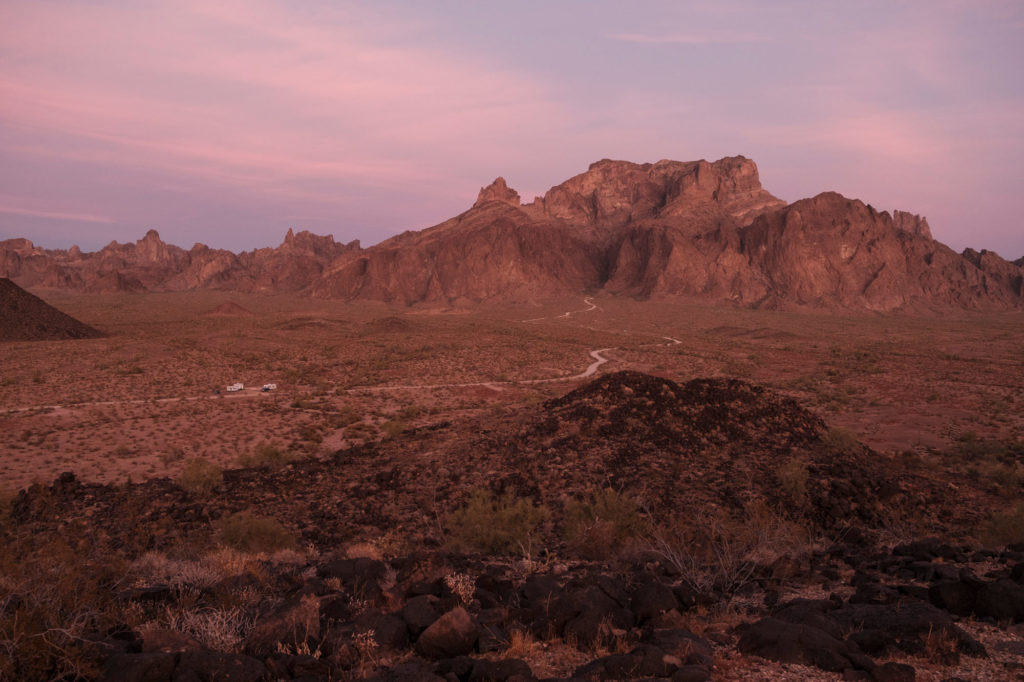
WILDLIFE ENCOUNTERS
Living on public land, outside of cities, means that we’re living in the wilderness, in the habitat of various kinds of wildlife. In the mountains we take in to consideration the possibility of encountering animals such as bears, mountain lions, deer, elk, moose, fox, and coyotes. In the desert it’s things like coyotes, burros, rabbits, snakes, and large insects. These potential encounters do not stop us from spending time outside and doing the things we love (we go on long nature walks every single day) but they do heighten our awareness.
In the mountains, we always carry a canister of bear spray and will talk out loud to ourselves if we’re walking in thick vegetation and feel like we could potentially spook an animal. In the desert, we simply try to avoid being there during the time of year when snakes and insects are most active, which is the warmer months of the year. However, sturdy footwear and keeping our eyes on the ground are still priorities for us when living in the desert.
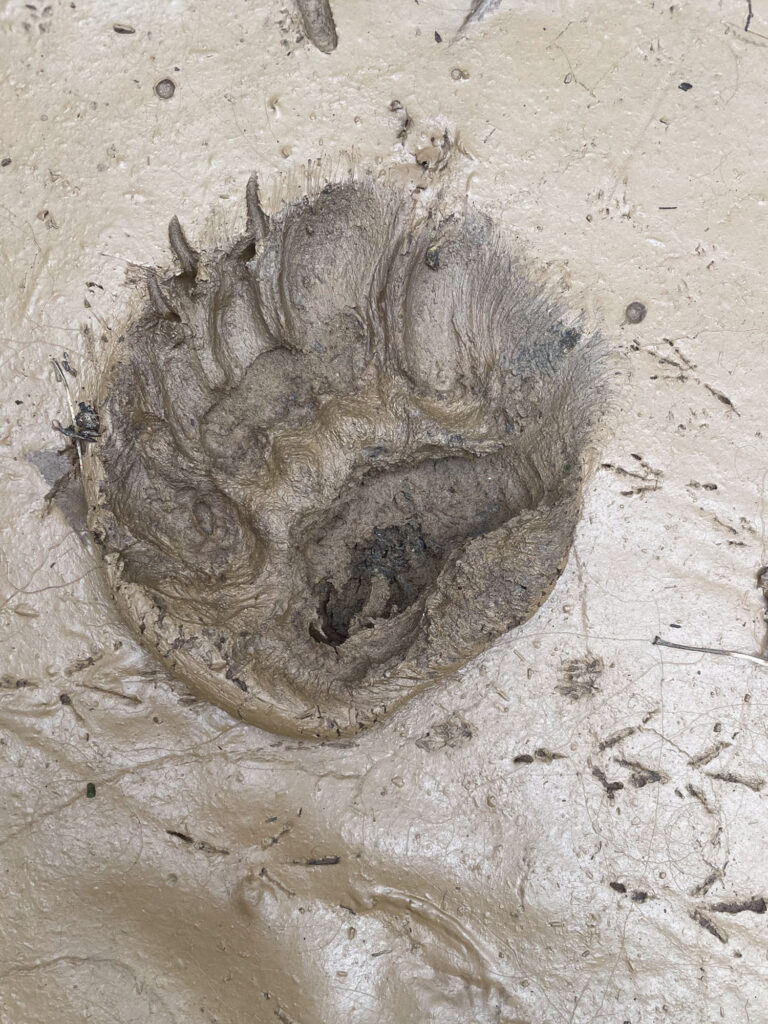
Watching for tracks is one way we stay aware of nearby wildlife. 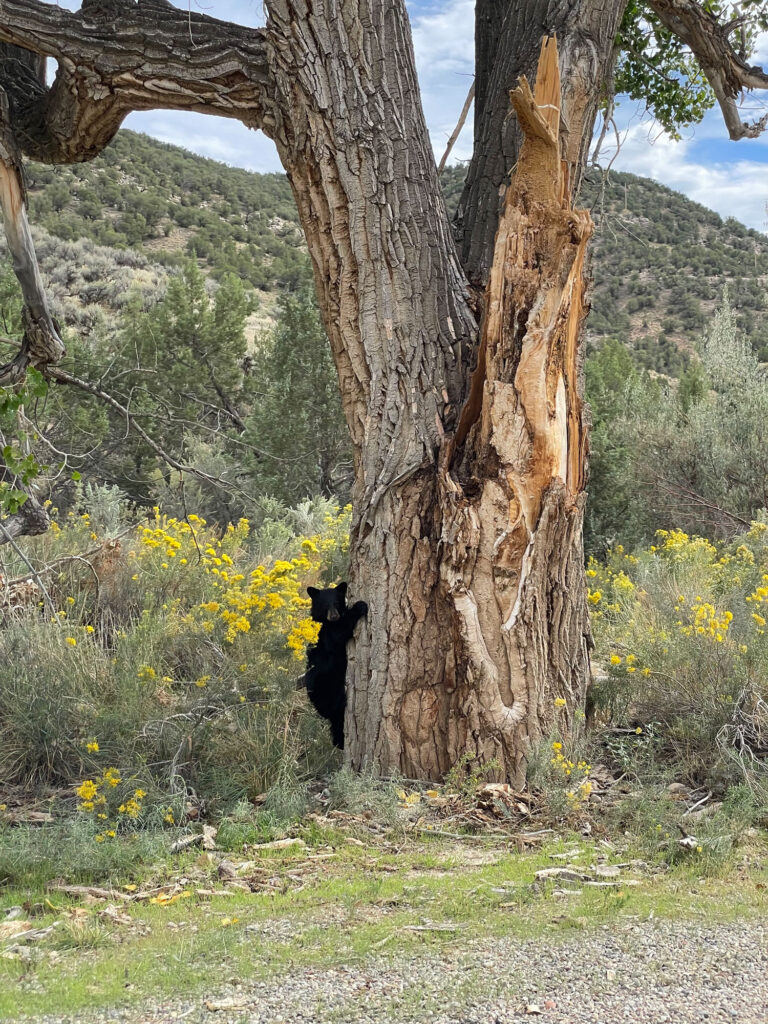
We’ve seen a lot of wildlife but mostly from a comfortable distance. There have only been a couple of nerve-wracking experiences such as almost stepping on a rattlesnake and walking within a few feet of a bear hiding in the shrubs. I’d say the most startling experience was a burro that walked right up next to our truck in the middle of the night and scared the daylights out of us when it started making loud and jarring hee-haw noises while we were asleep. This memory evokes nothing but laughter now, but for a split-second was a bit frightening.
Wildlife is not out to get us but will take advantage of an opportunity. Keeping a clean camp is the best way to keep unwanted visitors away. Food scraps or strong scents are likely to lure something in, whether it be a bear or a squirrel.
We’re not scared of wildlife but aware. Making our presence known, in an effort to not startle anything, is our main priority.
PEOPLE
As much as the places we camp may appear like the middle of nowhere, there are almost always other people around. Whether it’s other campers or people recreating (fishing, hiking, hunting, etc), we’re rarely completely alone.
There have only been a handful of times that a stranger has approached our camp and it’s always been for the same reason…they’ve needed some kind of help. Mark has fixed flat tires, jumped dead car batteries, and towed people out of being stuck. While I don’t necessarily love being approached by a stranger at our camp, I figure it’s probably more nerve-wracking for them than it is for us.
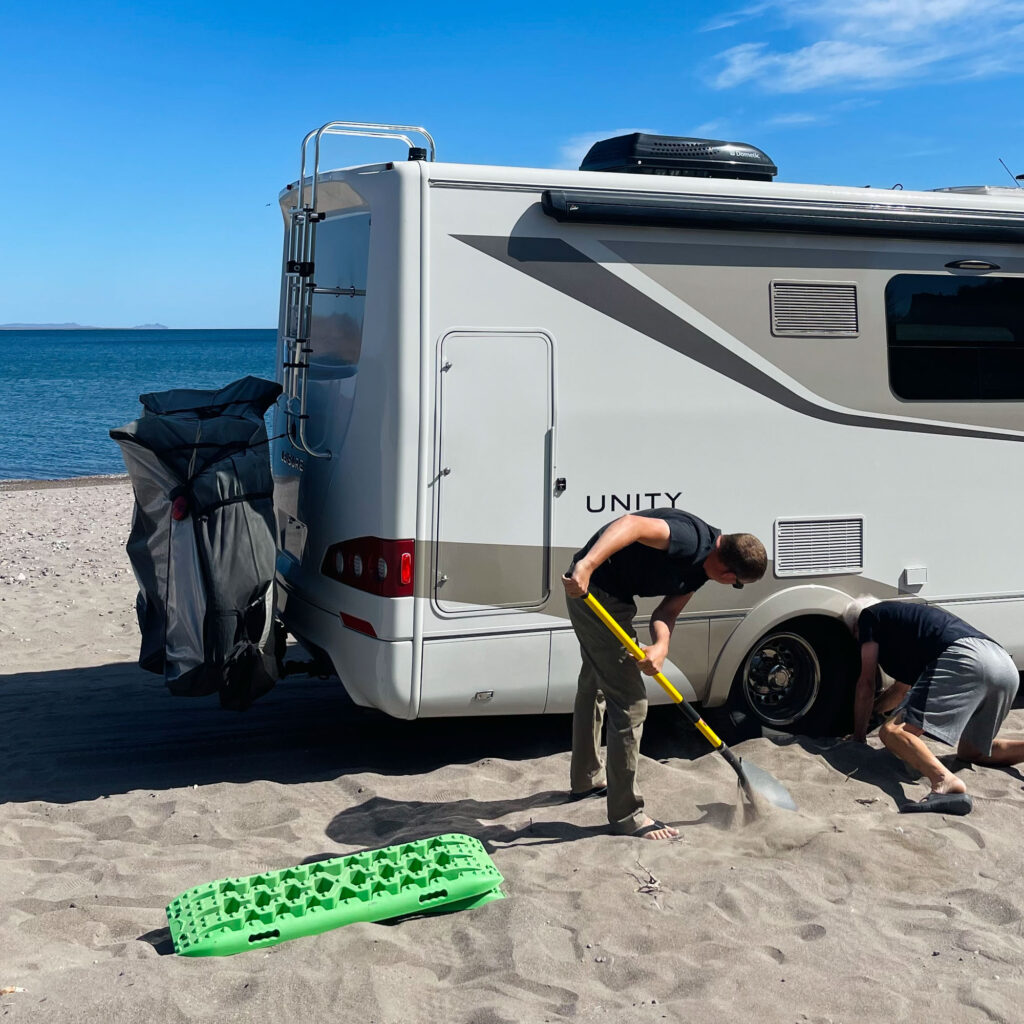
Mark helping a stranger get unstuck.
Neither our vehicles or anything at camp has ever been tampered with, nor have we ever dealt with any kind of suspicious behavior. The one and only human-related safety issue that we come across from time to time is people target shooting irresponsibly. There have been times where it feels a little too close for comfort and/or it feels as though they are not shooting in a safe direction. I think some people make the assumption they’re in the middle of nowhere and no one else is around when that isn’t the case. So, again, just like with wildlife, we keep our awareness heightened. This is not a common experience but also has a lot to do with where we camp and when. When hunting season kicks off in Colorado is when we’re less likely to camp in some of the wild places that we normally do during the summer.
Most people we come across in the wilderness are simply out to enjoy the solitude of nature just like we are. I do make a habit out of carrying a canister of bear spray when I’m out and about alone, just as a precautionary measure if I needed to defend myself. Whether it’s a baseball bat, a bottle of mace, your mad tae-kwon-do skills, a mag light or a firearm, some form of protection can help bring an added sense of security when camping. But no matter what your preferred method of protection, make sure you know how to use it otherwise you’re just a danger to yourself and those around you.
INJURIES
My biggest fear isn’t getting mauled by a bear or attacked by a human but instead it’s one of us getting injured when we’re far from any kind of help. Therefore we’re calculated in the activities we participate in. Whenever leaving camp for a hike, bike ride or otherwise, we always take our Garmin InReach. Cell service is often non-existent where we camp and so an alternative communication device is an important tool to have. It also has an SOS button in case of an emergency, though search & rescue could be a long way out depending on where we are. We also carry a robust first-aid kit and generally try to use common sense when recreating in wild places.
OTHER SELF-INFLICTED RISKS
When people ask us “but aren’t you scared to live like that?” I think they’re assuming there are axe murderers running around in the woods or mountain lions on the loose that only eat humans, when the truth of the matter is, the greatest risks we face are risks we bring on ourselves. Injuries are one, as I mentioned above, other risks are things like getting your vehicle stuck or breaking down in the middle of nowhere, getting lost on a trail, getting hypothermia or heat stroke from exposure to the elements and not having the appropriate gear, and so on. If you’re going to drive, hike, bike, etc in to wild, unpopulated places, you need to be prepared to take care of yourself. You don’t want to drive somewhere you could get stuck, if you don’t know how to get unstuck. You don’t want to assume you’ll have cell service when there’s a possibility you won’t. Here are some of the things we always have on us in order to mitigate such risks…
(This is by no means a fully comprehensive list of all the gear we carry, it’s just some of our non-negotiables. We’ll be back in a few weeks with a detailed gear list!)
Self-recovery tools if we were to get the truck stuck:
Gear for recreating at high elevation where weather conditions change frequently:
- Down jacket
- Rain coat
- Waterproof pants
- Waterproof boots, I’ve loved these Keens for many years
- Garmin InReach (satellite communication device)
- Bear spray
- Pack with water bladder
Gear for recreating in desert environments:
- Light-weight moisture-wicking shirt. We wear Patagonia Capilene hoodies.
- A wide-brimmed hat
- Garmin InReach (satellite communication device
- Sturdy shoes or boots
- Pliers or multi-tool, for removing cactus from your shoes or pants.
- A pack with water bladder.
In full transparency, we didn’t always have all these things, and in some cases learned the hard why why we should have them. Hopefully these lists will help you get started on the right foot and avoid some of the mistakes we made when we first started out.
I believe a feeling of safety is born from familiarity. Each and every one of us lives with inherent risk every day but if we’re used to those risks, like driving for instance, we don’t think twice about it. I remember living in a house, lying in bed at night thinking about how badly I wanted to live on the road while also thinking about all the bad things that could potentially happen and in turn totally freaking myself out. But after years of living on the road I am familiar with the risks and have a track record of safety that informs my comfort level. Going from living in a fixed location to traveling full-time means shifting in to a lifestyle with a lot of unknowns. But the more informed and experienced you become, the safer you’ll feel over time.

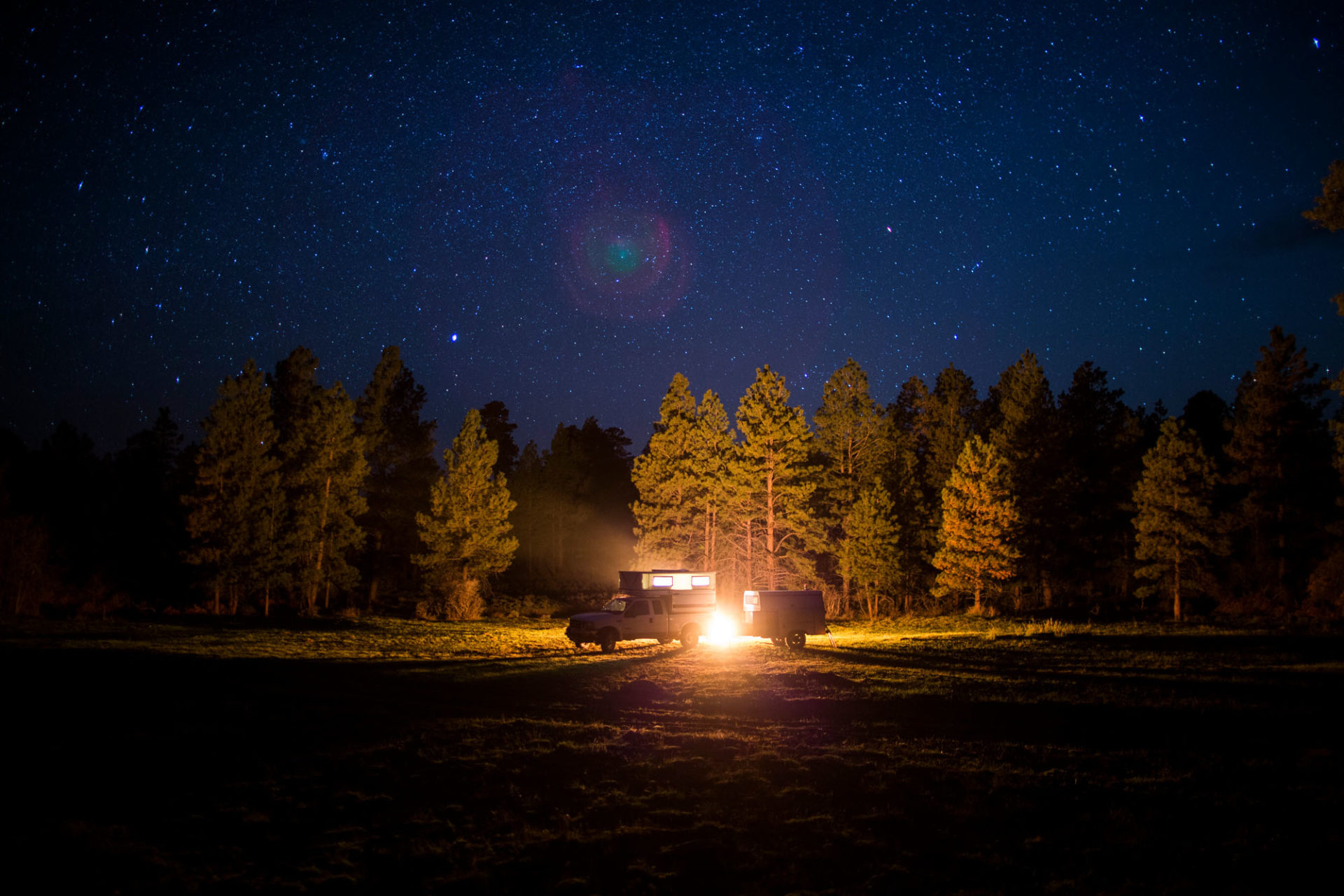
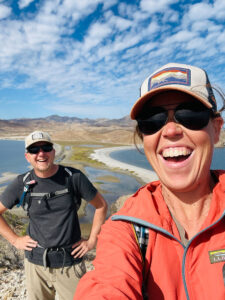
Excellent information! I feel better about you living out there in the middle of nowhere at times.
Oh good…I’m glad reading this gave you some comfort 🙂
I’ve camped all over. Seldom if ever had a problem. But I’m always on the lookout for any signs of possible trouble. Researching a camp area certainly pays dividends. In my case it’s people running their dogs loose. My dog has been attacked on two separate occasions by an off leash dog. So I tend to camp where there is a leash required or off by myself just to be on the safe side.
I’m so sorry to hear about the trouble you’ve had with off-leash dogs. We had similar stress when we had dogs and had to be really diligent about where we camped. Luckily, in the west at least, there’s lots of room to spread out.
Just a note here, and no first hand bad experiences with bears, though I’ve learned it’s not always a good idea to pitch one’s tent close to a stream. Inside my tent, late one night during a backpack in the outer reaches of Yosemite National Park, and decidedly not in the Valley or near any campsite, I was awoken by two or three bears walking down the middle of the stream. Since these were “park” bears, but not parking lot bears, I just decided to stay put and not make the usually suggested scene with loud noises and making oneself look big. The bears would have been far bigger than me in any event. The bears went on their merry way and I went back to sleep. This was long before bear spray became readily available and also prior to the invention of the commercial bear food containers, so we followed the old adage, “hang your food from a rope way out on a branch high enough to thwart bears.” The only other bear adventure we’ve had was while camping in our Four-Wheel Camper up near Virginia Lakes in the Eastern Sierras. We had our cooler right next to the back bumper of our truck and were just getting ready for bed when a bear showed up just outside our back door. We opened the screen door and said “Get!” and the is exactly what he did. We now mostly keep a Yeti cooler inside the truck, though I guess a bear could break into the truck if he so desired. One final note is that I’ve read that bear spray is for bears, somewhat less concentrated and more misty than pepper spray intended for humans. Self defense pepper spray is forcefully concentrated to inflict maximum discomfort to two-legged aggressors. We carry both sprays.
[…] A-Z Guide to Full-Time RV Living: Bears, Bandits & Breakdowns […]